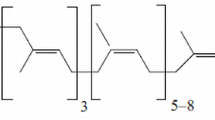Abstract
The injection of antigen into the peritoneal cavities of actively sensitised rats produced an immediate reaction characterised by an increase in concentrations in the peritoneal fluids, collected 5 min later, of extravasated dye labelled plasma proteins, histamine and slow reacting substance of anaphylaxis (SRS-A). Changes were also produced in the numbers of leucocytes in the blood and peritoneal cavity. 5 min after antigen challenge there was a reduction in the number of cells that could be washed from the peritoneal cavity. 4 h after antigen there was an increase in numbers of neutrophils both in the blood and peritoneal washings and these fell to the levels in control rats at 24 h. 24 h after antigen, and continuing for 72 h, there was an increase in numbers of eosinophils and mononuclear cells in the peritoneal washings.
The rats were injected intravenously with sephadex particles to produce a blood eosinophilia at the time of antigen challenge, this increased the numbers of eosinophils migrating into the peritoneal cavity but had no effect on antibody levels, the numbers of other leucocytes or on the immediate reaction.
An inhibitor of lipoxygenase and cyclo-oxygenase metabolism of arachidonic acid, phenidone, at 100 mg/kg p.o., inhibited SRS-A release to control levels, in the immediate reaction, but had not effect on the leucocyte changes. The glucocorticosteroid, dexamethasone, at doses of 0.1 and 1 mg/kg p.o., produced little inhibition of SRS-A release but significantly inhibited neutrophil, eosinophil and mononuclear cell infiltration into the peritoneal cavity. These results suggest that arachidonic acid metabolites released in the immediate reaction are not the prime mediators of the cellular changes. Isoprenaline, at 0.05 and 0.2 mg/kg s.c., inhibited extravasation in the immediate reaction with no effect on histamine release but only the higher dose inhibited neutrophil and eosinophil infiltration into the peritoneal cavity. Aminophylline, at 50 mg/kg p.o., had no effect on the immediate reaction but inhibited the neutrophil infiltration. Disodium cromoglycate (DSCG) at 20 and 100 mg/kg s.c. inhibited the immediate reaction but this had no effect upon the cellular changes taking place after 5 min. Cyproheptadine at 1 mg/kg s.c. inhibited extravasation but had no effect on the cellular changes. It appears therefore that factors other than those derived from the mast cell were responsible for the cellular changes in this system. DSCG at 100 mg/kg s.c. and aminophylline at 25 and 50 mg/kg p.o. prevented the reduction in the number of cells that could be washed from the peritoneal acvity 5 min after antigen challenge.
Similar content being viewed by others
References
T.J. Sharpe, E.J. Harling andH. Smith,Acute inflammation following intraperitoneal injection of antigen into actively sensitised rats, Int. Arch. Allergy Appl. Immun.59, 437–442 (1979).
T.J. Sharpe andH. Smith,Effects of drugs on the acute inflammation following intraperitoneal injection of antigen into actively sensitised rats, Int. Arch. Allergy Appl. Immun.60, 216–221 (1979).
R.F. Lemanske andM.A. Kaliner,The experimental production of increased eosinophils in rat late-phase reactions, Immunology45, 561–568 (1982).
R.S. Speirs andM.E. Dreisbach,Quantitative studies of the cellular responses to antigen injection in normal mice, Technique for determining cells in the peritoneal fluid, Blood11, 44–55 (1956).
F.E. Hargreave andJ.L. Pepys,Allergic respiratory reactions in bird fanciers provoked by allergen inhalation provocation tests, J. Allergy Clin. Immunol.50, 157–173 (1972).
M. Kaliner andR. Lemanske,Inflammatory responses to mast cell granules, Fed. Proc.43, 2846–2851 (1984).
M.R. Allensmith, R.S. Baird, J.V. Greiner andK.J. Block,Late phase reactions in ocular anaphylaxis in the rat, J. Allergy Clin. Immunol.73, 49–55 (1984).
G.J. Gleich,The late phase of the immunoglobin-E mediated reaction: a link between anaphylaxis and common allergic disease, J. Allergy Clin. Immunol.70, 160–169 (1982).
R.D. De Shazo, A.I. Levinson, F. Dvorak andR.W. Davis,The late phase skin reaction: Evidence for activation of the coagulation system in an IgE dependent reaction in man, J. Immunol.122, 692–698 (1979).
H.B. Richerson, D.W. Rajtora, G.D. Penick, F.R. Dick, T.J. Yoo, J.K. Kammermeyer andJ.S. Anuras,Cutaneous and nasal allergic responses in ragweed hay fever: Lack of clinical and histopathologic correlations with late phase reactions, J. Allergy Clin. Immunol.64, 67–77 (1979).
P.J. Dor, D. Vervloer, M. Sapene, L. Andrac, J.J. Bonerandi andJ. Chaprin,Induction of late cutaneous reaction by Kallikrein injection: comparison with allergic-like late response to compound 48/80, J. Allergy Clin. Immunol.71, 363–370 (1983).
G.A. Higgs, K.G. Mugridge, S. Moncada andJ.R. Cane,Inhibition of tissue damage by arachidonate lipoxygenase inhibitor BW 755c, Proc. Nat. Acad. Sci. U.S.A.81, 2890–2892 (1984).
G.J. Blackwell andR.J. Flower,1-Phenyl-3-pyrazolidone: an inhibitor of arachidonate oxidation in lung and plateles, Prostaglandins16, 417–425.
J.A. Salmon, P.M. Simmons andS. Moncada,The effects of BW 755c and other anti-inflammatory drugs on eicosanoid concentrations and leucocyte accumulation in experimentally-induced acute inflammation, J. Pharm. Pharmacol.35, 808–813 (1983).
S.J. Foster andM.E. McCormick,The mechanism of the anti-inflammatory activity of glucocorticosteroids, Agents and Actions16, 58–59 (1985).
G.J. Blackwell, R. Carnuccio, M. Dirosa, R.J. Flower, L. Parente andP. Persoci,Macrocortin: a polypeptide causing the anti-phosphilipase affect of glucocorticoids, Nature (Lond.)287, 147–149.
F. Hirata, E. Schiffman, K. Venkatasubramanian, D. Soloman andJ. Axelred,A phospholipase A 2 inhibitory protein in rabbit neutrophils induced by glucocorticoids, Proc. Nat. Sci. U.S.A.77, 2533–2536 (1980).
K. Ohuchi, M. Watanabe andL. Levine,Arachidonate metabolites in acute and chronic allergic air pouch inflammation in rats and the anti-inflammatory effects of indomethacin and dexamethasone, Int. Archs. Allergy appl. Immun.75, 157–163 (1984).
H. Smith,Pharmacological modulation of the IgE mediated release process, Fundamentals in respiratory disease2, 123–159 (1977).
C.J. Coulson, R.E. Ford, S. Marshall, J.L. Walker, K.R.H. Wooldridge, K. Bowden andT.J. Coomb,Inter-relationship of cyclic nucleotides and anaphylactic reactions, Nature265, 545–547 (1977).
Author information
Authors and Affiliations
Rights and permissions
About this article
Cite this article
Spicer, B.A., Laycock, S.M. & Smith, H. The effects of drugs on leucocyte changes following the injection of antigen into the peritoneal cavities of actively sensitised rats. Agents and Actions 17, 498–505 (1986). https://doi.org/10.1007/BF01965521
Received:
Accepted:
Issue Date:
DOI: https://doi.org/10.1007/BF01965521



